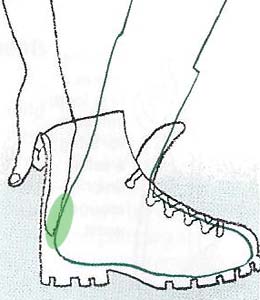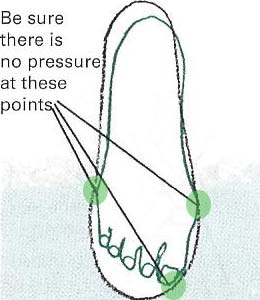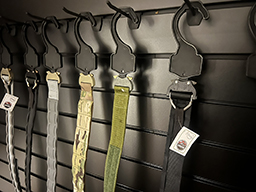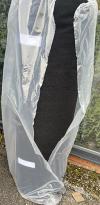How to Prevent a Blister?
Blisters are definitely one of the most common down fall to hiking. Caring for your feet correctly and taking the correct precautions can certainty improve the quality and experience of your hike.
Blisters are generally caused by;
Heat – due to skin rubbing against the sock and being pressed against the boot
Moisture – allowing skin to get wet softens it resulting in less protection. Furthermore this prevents the sock from moving smoothly on the skin.
Grit – general dirt and gravel inside the boot can cause friction in certain areas producing more heat.
One of the main ways of preventing getting blisters is finding boots that fit correctly and are comfortable for your feet.
Good tips for ensuring that new boots fit properly;
1.Before lacing the boots put one finger down the back of the boot, the finger should fit comfortably.

2.Lace the boots and wiggle your toes to ensure that they are not cramped.

3. good way to see if the boots fit correctly is to kick a wall. Your toes should not touch the end of the boot
- Rocking your feet, bouncing and squatting or general movement in the boots will allow you to feel if the boot comes away from your heel, this should not happen if the boot fits correctly.
5. Standing on the side of your feet will allow you to feel if your ankle is supported and give painless flexibility.
Wearing clean and correct socks will help prevent blisters. Correct walking socks have three layers to prevent friction on the skin.
Blisters are more likely to develop on moist skin. To avoid this wear moisture absorbing socks and or change your socks twice a day. For playing sport or regular sport, sports socks or thicker wool socks can prevent your feet from getting wet reducing the risk of getting a blister. Also applying talc of foot powder will reduce the chances of your feet getting wet.
Stop if you feel a hot or sensitive area on your foot. To avoid this turning into a blister, tape up the sore area, add some padding or apply an anti-blister cerium.
An old military trick states that wearing thin tights under your clothes and under socks keeps ticks and chiggers away, keep you warmer, and minimize friction to reduce blisters. Tights can also be improvised as a fishing net and a water filter.















